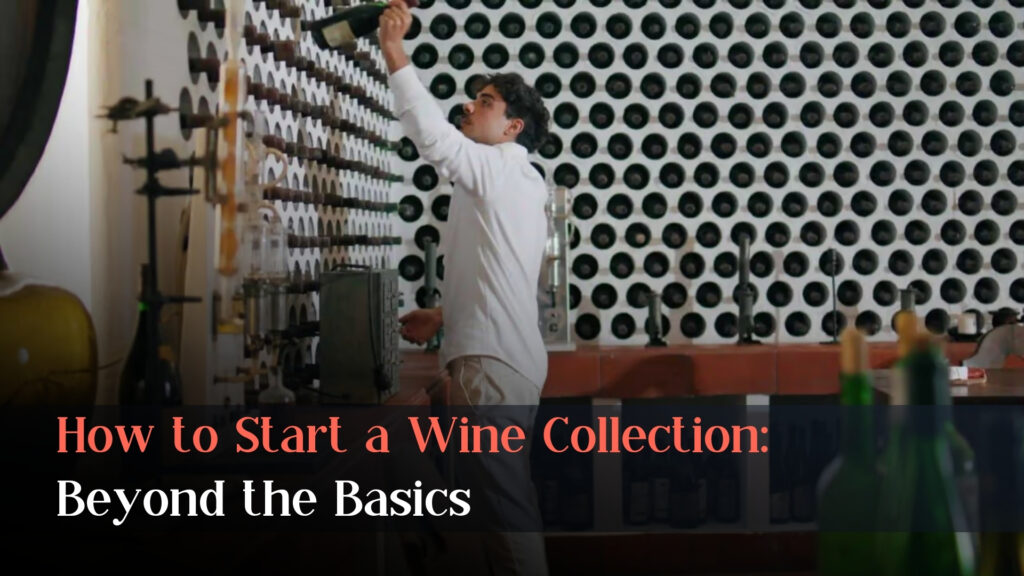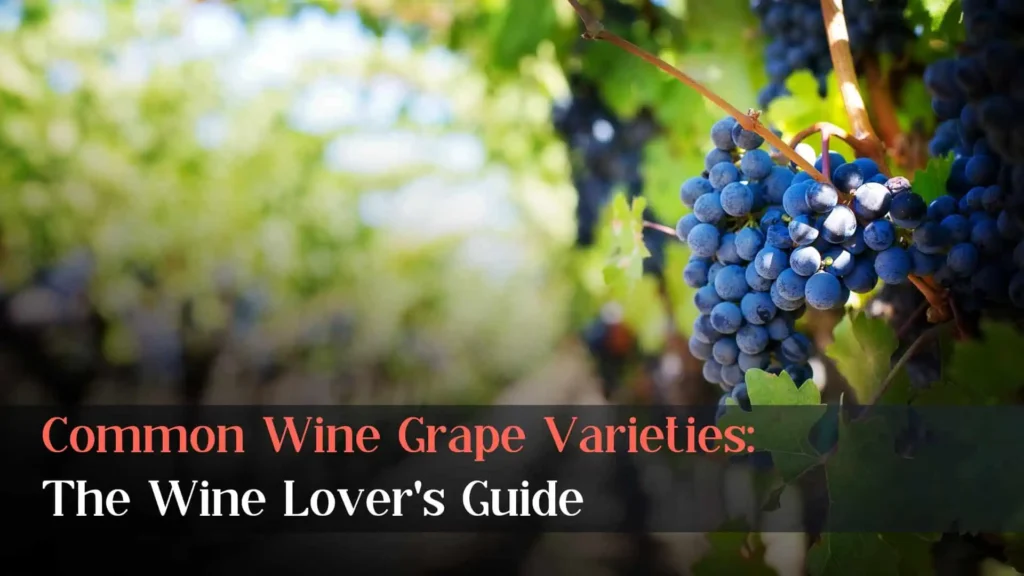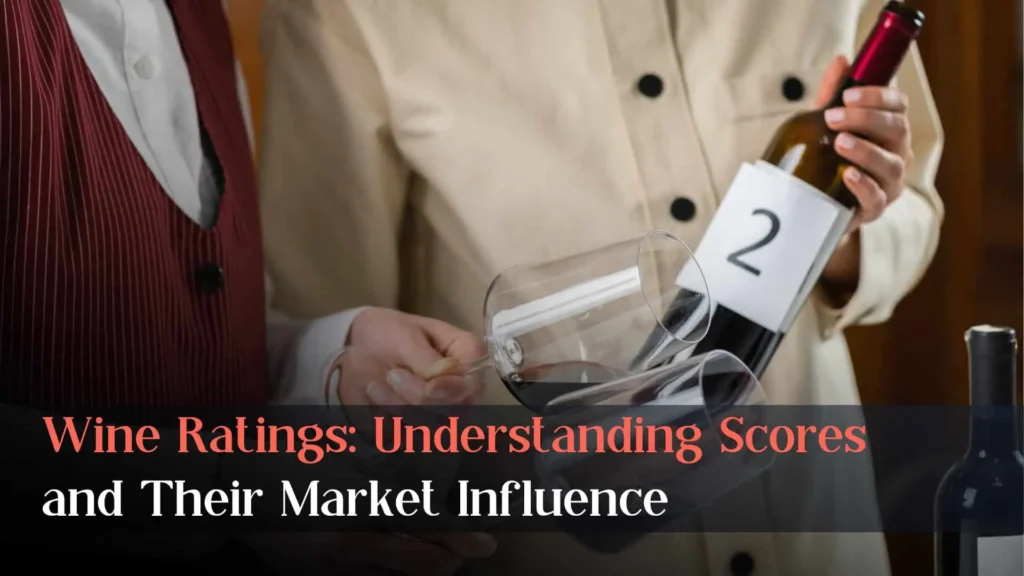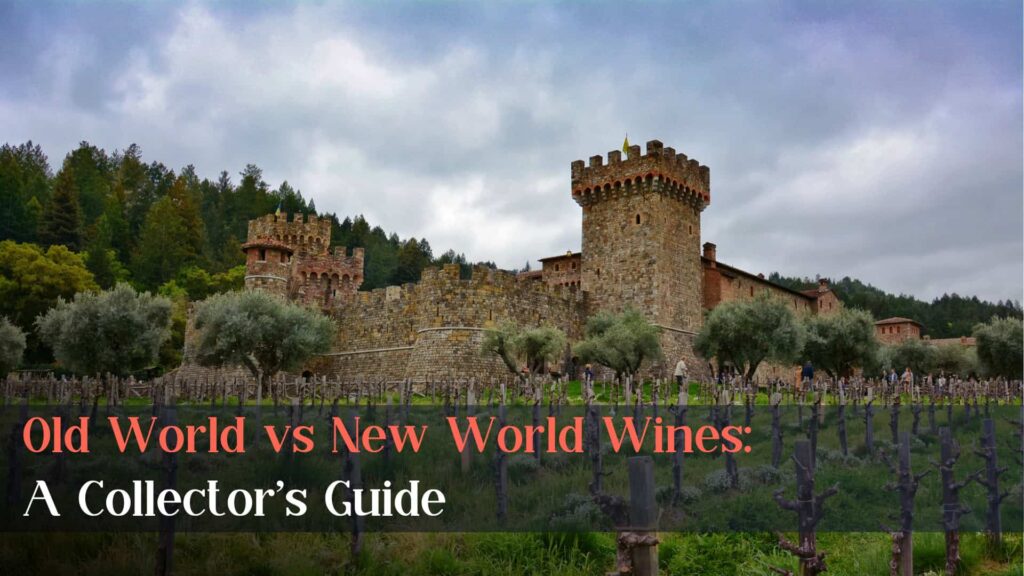Wine collecting is a hobby that ignites passion, stimulates the senses, and opens doors to new experiences that can last a lifetime. At its heart, it’s about the joy of discovery – discovering that perfect bottle to savor on a special occasion or discovering a hidden gem to be shared with friends. While some collectors eye potential profits, for many, the true value lies in the journey of discovering knowledge and new perspectives in the continuously evolving world of wine.
In this guide, we’ll explore the world of wine collecting, offering insights and practical advice for both beginners and those looking to refine their approach. Whether you’re drawn to the rich history of Old World wines or the bold innovations of New World producers, there’s always something new to explore and enjoy.
Is wine worth collecting? The answer is as nuanced as a complex vintage. Below, we’ll provide all the information you need to determine if wine collecting is the right pursuit to add more enjoyment to your life.
Table of Contents
ToggleWhy Start a Wine Collection?
Wine collecting is about more than just collecting bottles; it’s a journey of discovery that engages all your senses. Not only that it’s big business too, with Sotheby’s latest wine and spirits auction breaking it’s all time auction sales record for the third year in a row with $159M in sales in 2023.
Let’s explore some of the reasons why people fall in love with this captivating pursuit:
A Feast for the Senses

At its core, wine collecting is about experiencing the rich tapestry of flavors and aromas the world of wine has to offer. Each bottle you add to your collection is an opportunity to explore new tastes, from the bold tannins of a young Bordeaux to the delicate floral notes of an aged Riesling.
As you develop your palate, you’ll find joy in distinguishing subtle differences between vintages, regions, and winemaking styles.
Creating Memorable Moments
Your wine collection becomes a treasure trove of potential experiences. Imagine uncorking a special bottle to celebrate life’s milestones or sharing a rare vintage with friends during an intimate dinner.
These moments, enhanced by the perfect wine, can create lasting memories and deepen your appreciation for the art of winemaking.
The Thrill of the Hunt
For many collectors, there’s an undeniable excitement in seeking out that perfect bottle. Whether it’s tracking down a highly-rated vintage or discovering an under-the-radar gem, the pursuit itself becomes a rewarding part of the hobby.
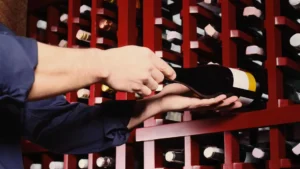
A Reflection of Personal Taste
When properly maintained, your wine collection can become a unique expression of your personal preferences and experiences. Over time, it will evolve with you, reflecting your journey through the world of wine and the memories associated with each bottle.
Whether driven by one or all of these factors, wine collecting offers a rich and rewarding experience. As collections grow, many find their motivations evolving, making wine collecting a dynamic and engaging long-term pursuit.
Building and Curating Your Wine Collection: A Comprehensive Guide
Starting and managing a wine collection can be an exciting journey. In this section, we’ll walk you through 6 key aspects of building and maintaining a high-grade wine collection:
Define Your Goals and Set a Budget
Before diving into wine collecting, it’s crucial to determine your primary motivation. Are you collecting for personal enjoyment, investment purposes, or a combination of both? Your goals will guide your collecting strategy.
Once you’ve clarified your objectives, set a realistic budget. Consider not only the cost of the wines but also expenses for storage and insurance. It’s wise to start small and plan to grow your collection gradually.
Educate Yourself on Wine
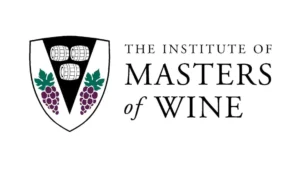
Organizations like the Institute of Masters of Wine provide educational resources and courses about wine.
Knowledge is key in wine collecting. Immerse yourself in the world of wine by reading books, magazines, and reputable online sources – or simply by drinking wine!
Attend wine tastings and seminars to expand your practical knowledge. For a more structured approach, consider taking a wine course through institutions like The Institute of Masters of Wine or WSET’s.
Develop Your Palate and Sense of Taste
Tasting is an essential part of wine collecting. Sample a variety of wines to understand your preferences and develop your palate. Keep a tasting journal to track your experiences and observations.
Don’t hesitate to step out of your comfort zone and try wines from different regions and styles.
Start with a Core Collection
Begin your collection with some of your personal favorites, as your preferences should ultimately guide your collecting strategy. Start with wines that you already know and feel confident about, before looking into wines you haven’t personally tasted or had experience with. As your experience and preferences develop over time, you can begin adding more variety to your collection to diversify and further build out your collection.
Consider exploring En Primeur offerings for access to high-quality, age-worthy wines. This method of buying wine while it’s still in the barrel can be cost-effective and helps build a foundation of wines with good aging potential.
Related Post: En Primeur: Navigating the World of Wine Futures
Explore Different Purchasing Channels
There are various ways to acquire wines for your collection. Local wine shops offer the advantage of building relationships with knowledgeable staff and allowing you to physically inspect the bottles you’re interested in. Online retailers, on the other hand, can provide access to a much wider selection and allow for easier price comparisons.
For rare or aged wines, consider wine auctions, but proceed with caution as a beginner, and don’t get swept up in the excitement. Buying directly from wineries, négociants, or through wine club memberships can also be a great way to get access to exclusive bottles.
Remember, building a great wine collection takes time. Be patient, stay curious, and most importantly, enjoy the process. Your collection should reflect your tastes and bring you joy, whether you’re saving a bottle for a special occasion or opening one to enjoy on a quiet evening at home.
Diversify Your Wine Collection
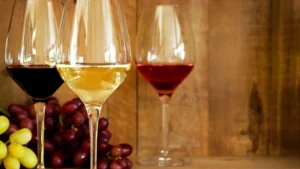
As your knowledge and core collection grows, focus on diversification. A well-rounded collection offers varied experiences and helps to spread investment risk. Aim for diversity in:
- Regions: Include wines from different areas worldwide.
- Grape varieties: Explore beyond the most common types.
- Styles: Mix red, white, rosé, sparkling, and fortified wines.
- Price points: Balance between everyday wines and special occasion bottles.
- Vintages: For age-worthy wines, consider multiple vintages for comparison.
Remember, diversification should align with your preferences and goals while offering variety and maintaining your interest over time.
Properly Store your Wine Collection
Proper storage is crucial for maintaining the quality and value of your wines. Key factors include consistent temperature (around 55°F or 13°C), appropriate humidity (60-70%), protection from light and vibration, and correct bottle positioning.
For small collections, a wine refrigerator might suffice. Larger collections may require a dedicated cellar. If you’re interested in learning more about wine storage, check out our article on the topic below:
Related Post: Wine Storage 101: Key Factors for Preservation
Best Wines to Start a Collection
Choosing the right wines is crucial when building your collection. Here’s a guide to help you select wines that are both enjoyable and potentially valuable:
Criteria for Collectible Wines
When selecting wines for your collection, consider these factors:
- Aging potential
- Reputation of the producer
- Vintage quality
- Scarcity
- Critical acclaim
Regions and Varieties to Consider
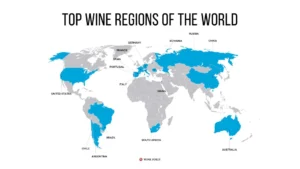
When getting started try to focus on regions known for producing high-quality wines [Source]
Some regions and grape varieties are known for producing age-worthy, collectible wines. Check out some of the following wine regions and grape varieties listed below that would benefit any collection:
Bordeaux, France
- Look for: Cabernet Sauvignon, Merlot/Merlot blends
- Notable producers: Château Lafite Rothschild, Château Margaux
Burgundy, France
- Look for: Pinot Noir, Chardonnay
- Notable producers: Domaine de la Romanée-Conti, Domaine Leroy
Tuscany, Italy
- Look for: Sangiovese (Brunello di Montalcino, Chianti Classico)
- Notable producers: Biondi Santi, Antinori
Napa Valley, California
- Look for: Cabernet Sauvignon
- Notable producers: Screaming Eagle, Opus One, Realm Cellars
Champagne, France
- Look for: Vintage Champagne
- Notable producers: Dom Pérignon, Krug
Navigating Challenges: Investment Considerations and Common Pitfalls
Wine collecting can be a rewarding hobby and potentially a lucrative investment, but it’s not without its challenges. Understanding these challenges can help you make informed decisions and avoid some of the more common mistakes.
Understanding the Fine Wine Market
The fine wine market can be complex and volatile. Prices are influenced by a wide variety of factors, but we’ve listed a few key ones to keep an eye on below:
- Critical ratings from respected wine critics
- Scarcity and production levels
- Brand reputation and historical performance
- Global economic conditions
- Emerging markets and changing consumer preferences
- Provenance and documentation of a wine’s history

Fine wines generally appreciate in price over time like this 1934 Chateau Margaux [Source]
It’s crucial to stay informed about market trends and to understand that past performance doesn’t guarantee future results. Stay tuned to the market by using resources like Wine-Searcher shown above.
Risks and Rewards of Wine Investing
Like any investment, wine comes with both potential rewards and risks:
Rewards:
- Potential for significant appreciation in value
- A tangible asset that can be enjoyed if not sold
- Diversification of investment portfolio
- Being able to enjoy wines in the long term that have paid for themselves!
Risks:
- Market volatility and unpredictability
- Lack of liquidity compared to other investments
- Storage and insurance costs
- Potential for fraud or counterfeit wines
Innovative platforms like GrtWines are addressing many of these challenges. By tokenizing wine assets and storing them in optimal conditions, GrtWines helps to ensure authenticity all while increasing liquidity through easier trading.
VII. Moving Forward with Your Wine Collection
Wine collecting is a multifaceted pursuit that combines knowledge, strategy, and personal taste. As you develop your collection, you’ll find it’s an ongoing process of learning and refinement.
Remember that building a worthwhile collection takes time. Start small, focus on quality over quantity, and allow your preferences to evolve naturally. Don’t be afraid to experiment with different regions, varietals, and vintages.
While the investment potential can be appealing, the primary value of a wine collection lies in its ability to enhance your appreciation of wine. A well-curated collection should reflect your journey in the world of wine.
Ultimately, the goal is to create a collection that you find both valuable and enjoyable. Whether you’re drawn to rare vintages or everyday favorites, your wine collection should be a source of satisfaction, not stress.
If you’re looking to get started purchasing the first wines for your collection, check out the GrtWines marketplace for a selection of rare and collectible wines.
